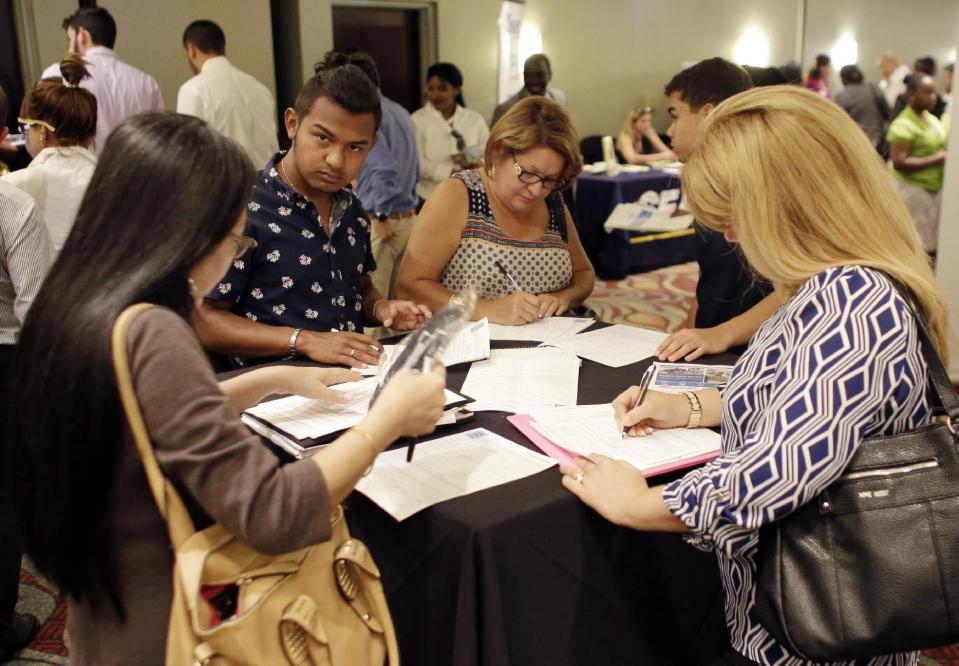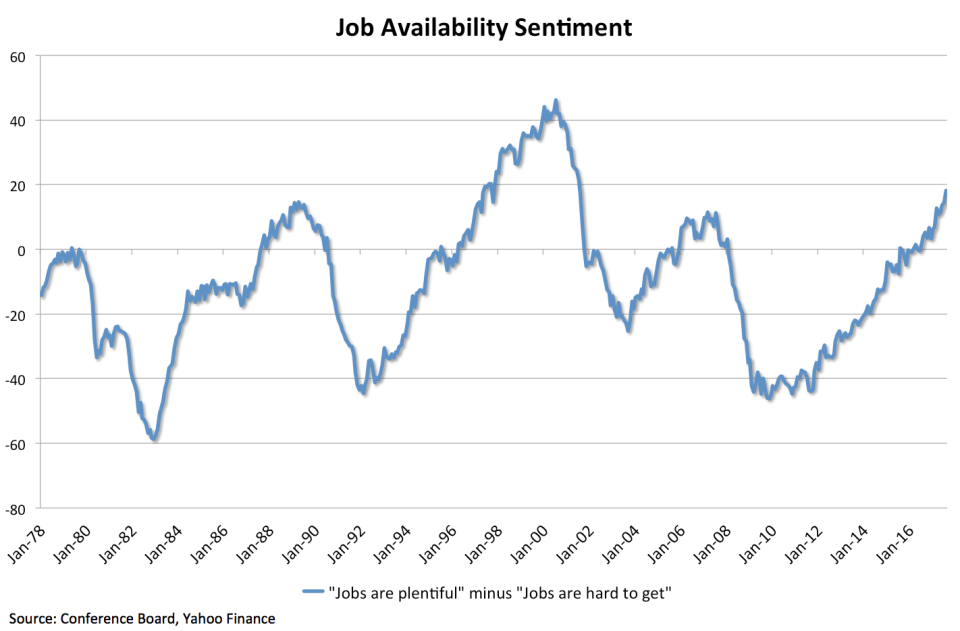More signs of a booming job market
American workers like what they see.
More than one-third of Americans say jobs are easy to get, according to the latest monthly survey conducted by The Conference Board. Only 17% think jobs are hard to get. The difference between those two measures is 18.1 percentage points, a sign of strong and growing optimism in the job market. The last time optimism was that high was the summer of 2001, right before the 9/11 terror attacks.

The last recession ended in 2009, and for several years the recovery evolved almost in slow-motion. But the pace of job growth began to pick up in 2014, and the recovery has now become an enduring expansion that could run for several more years.
GDP growth ticked up to 3% in the second quarter of 2017 from a dismal 1.2% the quarter before. Since the start of 2014, employers have added nearly 200,000 new jobs each month. There are now 6.2 million job openings in the United States, the most since such record-keeping began in 2000. A recent survey of accounting executives shows that the difficulty finding skilled workers is now the No. 1 challenge facing public and private companies.

Economists believe the U.S. economy is now near what they call “full employment,” a somewhat squishy measure suggesting all available labor is being used more or less efficiently. But things can still get better. “We are now in a labor market that is tighter than usual,” writes Gad Levanon, chief economist for North America at The Conference Board. “How tight is it? It is not as tight as in 2000, but indicators suggest that it may be as tight as it was in 2007, immediately prior to the Great Recession.”
The last time Americans were this positive about jobs
The Conference Board’s survey on job availability pinpoints July 2000 as the high-water mark for labor-market optimism. Back then, 55.8% of people said jobs were plentiful, while only 9.6% said they were hard to get, for a difference of 46.2 percentage points. That’s much larger than the current gap of 18.1 points, suggesting there’s still room for plenty of improvement.
Confidence in the job market was worst in December 1982, when only 2.9% said jobs were plentiful and 61.6% said they were hard to get, for a difference of – 58.7 points. That was worse than the lowest point during the latest recession, which came in November 2009, when the difference was – 46.1 points. The difference did not turn positive, with more people optimistic than pessimistic, until August 2015. Confidence has improved steadily since then.
There are still weak spots in the labor market. Unemployment remains elevated in parts of the country that aren’t benefiting from the technology revolution. Labor productivity remains low and wage gains have been hard to come by. But modest wage gains have an upside. They help keep inflation low, and since inflation is one thing that can cause a recession, that prolongs the recovery and extends the date at which the next downturn begins.
Confidential tip line: rickjnewman@yahoo.com. Encrypted communication available.
Read more:
Rick Newman is the author of four books, including Rebounders: How Winners Pivot from Setback to Success. Follow him on Twitter: @rickjnewman


